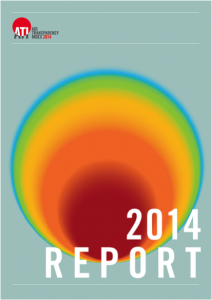Australia gets off lightly in 2014 global aid transparency rankings
By Robin Davies and Ashlee Betteridge
11 October 2014
 Australia was ranked 25th among the 68 aid providers assessed in the 2014 Aid Transparency Index, one rung lower than last year, putting it in the ‘fair’ category. Australia’s score actually improved by more than two percentage points, to 45.9 per cent, but others’ scores improved more, hence the slight drop.
Australia was ranked 25th among the 68 aid providers assessed in the 2014 Aid Transparency Index, one rung lower than last year, putting it in the ‘fair’ category. Australia’s score actually improved by more than two percentage points, to 45.9 per cent, but others’ scores improved more, hence the slight drop.
The United Nations Development Programme was ranked first, followed by the UK’s Department for International Development, the US’s Millennium Challenge Corporation, GAVI and the Asian Development Bank. China, as last year, brought up the rear. New Zealand plummeted from 18th to 26th place, though the decline in its score was only 2.5 percentage points.
Australia’s overall score is a weighted composite of scores on three sets of indicators, as below, with data on each indicator collected in the period from April to June 2014.
- The first set of indicators relates to a country’s overall commitment to aid transparency. Australia’s score held steady relative to last year at 34.9 per cent.
- The second set of indicators relates to transparency in the publication of organisation-level information. Australia’s score improved quite a bit from 52.1 per cent last year to 66.3 per cent this year—though the Coalition government has certainly made public no more information than the previous one about its strategies, budgets and allocation policies.
- The third set of indicators relates to transparency in the publication of activity-level information. Here Australia’s score dipped, from 41 per cent last year to 39.8 per cent in 2014, but not as much as might have been expected.
The Australia section of the report’s interactive website notes that ‘only a limited amount of project-level information that was previously available through the AusAID website can now be directly accessed via DFAT’s website’ (something we have also flagged). It comments also on the missing ‘Blue Book’ at budget time. However, it’s not clear that the sorry state of DFAT’s website during the data collection period had much, if any, impact on Australia’s overall score.
Perhaps that’s because it is still possible to find most old AusAID project documentation, unlinked yet undeleted, in nooks and crannies of the website via a search engine. Moreover, the methodology used in the compilation of the Aid Transparency Index advantages those who report a reasonable amount of information in ‘machine readable’ format to the International Aid Transparency Initiative (IATI), as AusAID did and DFAT continues to do, even if such information is not always terribly illuminating, or is already in the public domain. This appears to account for the improved score for organisation-level information this year: some additional but already-public material was published to IATI.
While the 2014 report, from our perspective, scores Australia much too generously, it does criticise Australia for its ‘unambitious’ IATI implementation schedule and urges the Australian government to establish specific timelines and delivery targets with a view to achieving full implementation of IATI’s reporting standard by the end of 2015. It calls for the inclusion of links to project documents in Australia’s IATI reporting and recommends that Australia establish an open data portal (which would sit atop the raw information in the IATI registry) for information on Australian aid.
The report also urges Australia to ensure that its Open Government Partnership (OGP) Action Plan includes a commitment to aid transparency—but the authors might not be right in assuming that the present Australian government is as committed as the former one to the OGP.
About the author/s
Robin Davies
Robin Davies is an Honorary Professor at the ANU’s Crawford School of Public Policy and an editor of the Devpolicy Blog. He headed the Indo-Pacific Centre for Health Security and later the Global Health Division at Australia’s Department of Foreign Affairs and Trade (DFAT) from 2017 until early 2023 and worked in senior roles at AusAID until 2012, with postings in Paris and Jakarta. From 2013 to 2017, he was the Associate Director of the Development Policy Centre.
Ashlee Betteridge
Ashlee Betteridge was the Manager of the Development Policy Centre until April 2021. She was previously a Research Officer at the centre from 2013-2017. A former journalist, she holds a Master of Public Policy (Development Policy) from ANU and has development experience in Indonesia and Timor-Leste. She now has her own consultancy, Better Things Consulting, and works across several large projects with managing contractors.
